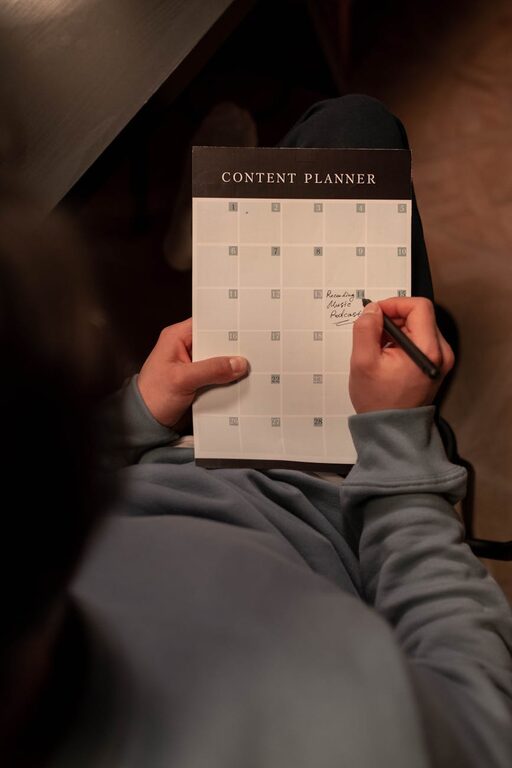Setting weekly goals is a powerful way to structure your time, stay focused, and achieve meaningful progress in your personal and professional life. However, some people struggle with setting goals that are too ambitious or vague, which can lead to frustration and burnout. In this post, we’ll explore how to set realistic weekly goals that keep you motivated and on track throughout the week.
Why Setting Weekly Goals Matters
Weekly goals break down bigger ambitions into smaller, manageable steps. When you focus on what you want to accomplish each week, it becomes easier to prioritize your tasks and measure your progress. This approach fosters a sense of achievement, encourages consistency, and helps you create good habits over time.
Step 1: Reflect on Your Bigger Picture
Before you dive into weekly planning, take a moment to reflect on your longer-term objectives. Are you working towards improving your health, advancing your career, learning a new skill, or something else? Understanding your overarching goals provides clarity and direction for your weekly targets.
– Write down your main goals for the next 3 to 6 months.
– Identify key milestones or deadlines.
– Use these insights to guide what you aim to accomplish each week.
Step 2: Use the SMART Goal Framework
SMART goals are Specific, Measurable, Achievable, Relevant, and Time-bound. Applying this framework to your weekly goals ensures they are clear and realistic.
– Specific: Define exactly what you want to achieve.
Example: Instead of “exercise more,” say “go for a 30-minute walk three times this week.”
– Measurable: Quantify your goal so you know when it’s done.
– Achievable: Ensure the goal is realistic given your current schedule and resources.
– Relevant: Align the goal with your bigger picture to stay motivated.
– Time-bound: Since you’re setting weekly goals, include the deadline of the week’s end.
Step 3: Prioritize Your Weekly Goals
Trying to do everything at once rarely works. Prioritize goals based on urgency and importance to make sure you focus your energy where it counts most.
– List your potential weekly goals.
– Rank them from highest to lowest priority.
– Choose 3 to 5 goals that are realistic to complete within the week.
Step 4: Break Goals Into Small Tasks
Even small weekly goals can feel overwhelming if they’re too general. Breaking them into actionable tasks makes it easier to start and maintain momentum.
For example, a goal like “complete project report” might be broken down into:
– Outline report sections (Monday)
– Write introduction and background (Wednesday)
– Draft main content (Thursday)
– Edit and finalize (Friday)
Step 5: Schedule Time for Your Goals
Scheduling is key to turning goals into actions. Use a planner, calendar app, or digital tool to block specific time slots for working on your tasks.
– Set realistic time estimates for each task.
– Avoid overbooking your days; allow flexibility.
– Schedule breaks and downtime to avoid burnout.
Step 6: Track Your Progress Daily
Checking in on your goals each day helps keep you accountable and allows you to adjust plans if needed.
– Keep a daily to-do list tied to your weekly goals.
– Highlight or mark completed tasks for motivation.
– Note any challenges to address in the future.
Step 7: Reflect and Adjust Weekly
At the end of each week, take time to review your accomplishments.
– What goals did you complete successfully?
– Which ones were challenging or didn’t get done?
– Why? Was the goal too big, or did unexpected events interfere?
– Adjust next week’s goals based on this insight to improve your goal-setting process.
Tips for Success
– Be flexible: Life happens, so it’s okay to shift goals or timelines if needed.
– Celebrate wins: Acknowledge your progress, no matter how small.
– Avoid multitasking: Focus on one goal at a time for better results.
– Stay positive: Use encouraging language when writing down your goals.
– Limit distractions: Create an environment that supports focus.
Tools to Help You Set and Track Goals
Many tools can support your goal-setting journey:
– Digital planners: Google Calendar, Microsoft Outlook
– Task management apps: Todoist, Trello, Asana
– Habit trackers: Habitica, Streaks
– Note-taking apps: Evernote, OneNote
Choose the tools that best fit your style and keep your goal-setting process simple yet effective.
—
Setting weekly goals is a skill that improves with practice. By being specific, realistic, and intentional with your planning, you’ll find it easier to stay motivated and make steady progress. Start small, reflect regularly, and enjoy the journey of becoming more organized and productive. Happy goal-setting!

